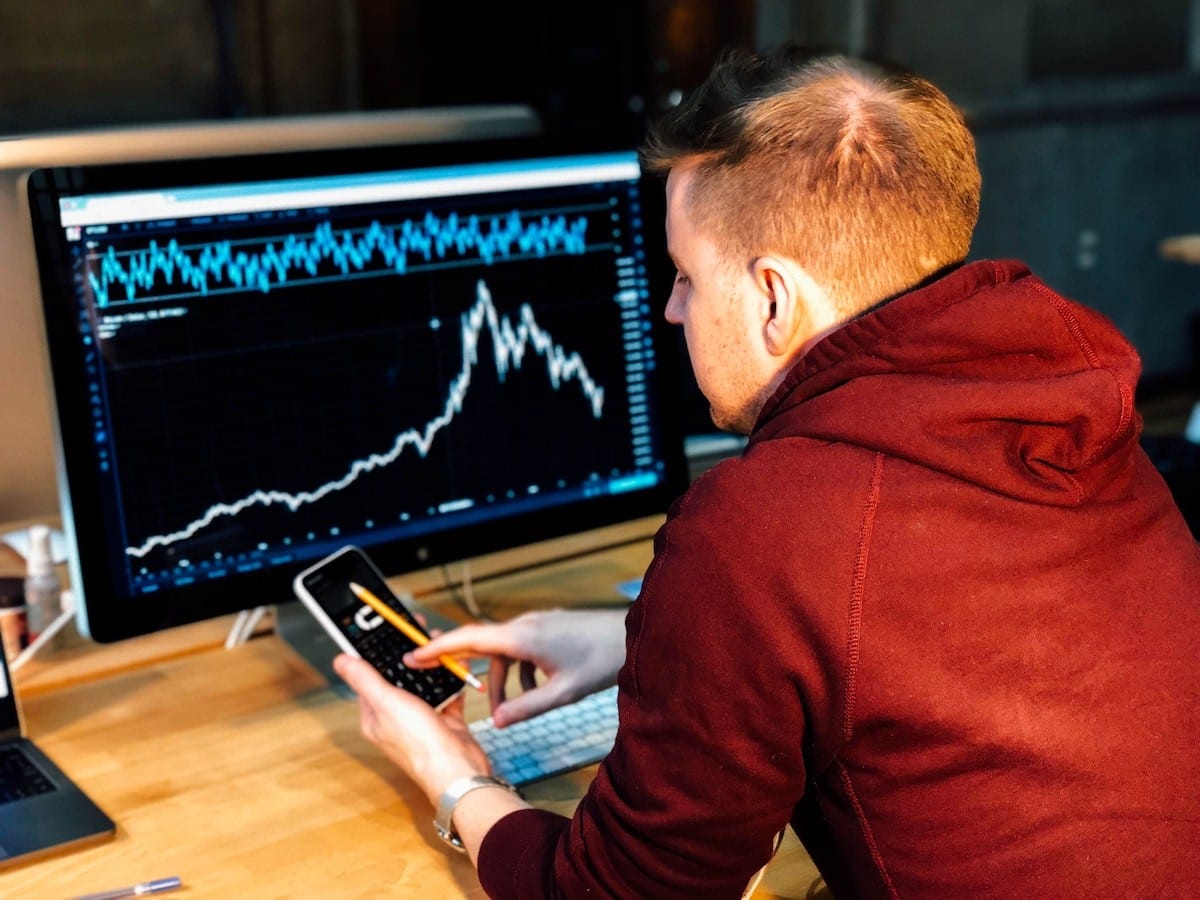Recovering from trading losses is a rite of passage for most traders. You're not alone if you've found yourself facing a hit after a series of unfavorable trades.
What matters now is regrouping and plotting your next move. Bouncing back isn't just about recouping financial losses; it's about rebuilding your confidence in your trading strategy and your ability to execute it. Acknowledge the setback, but don't let it define your future in the markets.
To start turning things around, let's take a step back and analyze your recent trades and understand what went wrong and why. But first, let's understand the psychology behind it.
Understanding the Psychology of Trading Losses
Trading losses can often be as much about your psychological state as they are about the markets. Your mind and emotions play a pivotal role in how you respond to losing trades.
Accepting Responsibility and Learning from Mistakes
You've got to face the music—every trader makes mistakes, but the successful ones own up to them. Accepting responsibility for your losses is crucial; it's the first step in turning things around. Assess your trading strategies and decisions critically, spotting exactly where things may have gone awry. Did hope or greed override your trading plan? By pinpointing these moments, you can extract valuable lessons.
- Examine the trade:
- Why did you enter?
- Was your stop-loss too tight or too loose?
- Did you follow your trading plan?
- Reflect and jot down:
- Sometimes writing down what happened and why can clarify your thoughts.
Controlling Emotions and Maintaining Discipline
Your emotions are your biggest frenemies in trading. They can push you to make hasty decisions based on fear or greed rather than logic. It's essential to stay disciplined. This means sticking to your trading plan and rules, even when it's tempting to bend them. Take a breath before every trade and ask yourself if you are being driven by an emotional impulse or a strategic decision. Keep your emotions in check, and your trading discipline tight.
- Tips for emotional control:
- Set clear rules for when to enter and exit trades.
- Use stop-losses and take-profits to automate part of the process.
- Schedule regular breaks to prevent emotional fatigue.
Managing Fear and Building Trading Confidence
Fear can be paralyzing, and in the world of trading, it often leads to missed opportunities or rushed decisions. However, building confidence is a process. Start by focusing on small wins that reinforce positive trading habits. With each successful decision, your confidence will gradually rebuild. Remember, even the most successful traders have faced fear and overcome it—it's part of the journey.
- Steps to overcome fear:
- Start with smaller trades to reduce risk exposure.
- Keep a trading journal to track your progress and improve your strategy.
- Celebrate your successes, no matter how small.
By understanding the psychology behind trading losses, you can recalibrate your approach to trading, learn from your past, and build a stronger, more disciplined, and confident trading mindset.
Strategic Responses to Trading Losses
After experiencing trading losses, it’s crucial to reassess your approach and strengthen your trading framework. This invigorates your trading routine with revitalized strategies, risk management, and a well-grounded trading plan.
Evaluating Trading Strategies and Making Adjustments
Revisit your trading strategies to determine what went wrong. Look at the indicators and accuracy rates of your trades. If the outcomes deviate significantly from your backtesting results, it might be time to tweak your approach. Adjustments can be as nuanced as refining your entry and exit points or as substantial as adopting a new set of indicators to guide your decisions.
- Analyze past trades: Study the performance of your trades and identify patterns of losses.
- Adjust your strategy: Enhance the effectiveness of your trading strategy with empirical evidence drawn from your trade history.
The Importance of Risk Management
Risk management is the guardrail of your trading journey. You need to set clear stop-losses and adhere to stringent position sizing to preserve your capital. Remember, safeguarding your bankroll is your top priority—you can't trade if your account is depleted.
- Limit Your Risk: Never risk more than a tiny percentage of your capital on a single trade.
- Consistent Application of Stop-Losses: Always use stop-loss orders on every trade to minimize potential losses.
Developing a Comprehensive Trading Plan
Your trading plan is your roadmap to success. It should spell out your goals, risk tolerance, and methodology in detail. Ensure that it integrates solid risk management strategies and discipline in position sizing and stop-loss execution. Update it regularly to reflect evolving markets and your growing experience.
- Goals and Objectives: Set clear, achievable goals to guide your trading decisions.
- Review and Update: Regularly revisit and refine your trading plan to stay aligned with market conditions.
By focusing on these strategic responses, you can turn losses into learning opportunities and build a resilient trading methodology.
Practical Steps to Recover from Trading Losses
Bouncing back from a trading loss requires a mix of psychological resilience and strategic adjustments. Here's how you can regain your footing in the financial markets.
Rebuilding Mental Capital and Resetting Goals
After a significant loss, recovering your mental capital takes priority. It's natural to feel knocked back, but remember, successful traders focus on their long-term potential, not just immediate gains. Start by resetting your goals. Define what a profitable trading journey means to you now, post-loss. Keep these goals S.M.A.R.T—Specific, Measurable, Achievable, Relevant, and Time-bound.
Adapting the Portfolio through Diversification
To reduce volatility in your portfolio, diversifying investments is key. But don't just throw your capital into random assets. Look for opportunities across different markets or sectors that show promise for capital gains. You can consider a mix of stocks, bonds, commodities, or even forex, depending on your risk tolerance. Just make sure to do your research or consult a financial advisor.
Effective Use of Trading Journals for Reflection
Your trading journal isn't just a log; it's a powerful tool for reflection. Reviewing past performance can offer insights into what went wrong—and right. Document everything: the trade, the outcome, market conditions, and your emotions at the time. This information becomes invaluable when planning your next steps. Spot patterns, learn from mistakes, and better predict future challenges.
Navigating the Markets after a Big Loss
Dealing with a significant trading loss can be tough, but crafting a solid comeback strategy with clear entry and exit points, proper position sizing, and insights from seasoned traders can help you regain your footing.
Strategic Entry and Exit Points in Trading
When you re-enter the markets after a loss, identify specific entry and exit points for each trade. Use technical analysis tools like support and resistance levels, moving averages, and chart patterns to make informed decisions. Establishing clear stop-losses is critical to limit potential losses.
Determining Position Size Based on Risk Tolerance
Your position size should align with your risk tolerance. An effective rule of thumb is not risking more than 1-2% of your trading capital on a single trade. Use this position sizing strategy to avoid significant blows to your portfolio and to stay in the game for the long run.
- Conservative Approach: Risk 1% of your capital per trade.
- Moderate Approach: Risk up to 2% per trade.
Learning from Other Successful Traders
Pay attention to successful traders and investors to follow who've experienced losses and bounced back. They often feature strategies that highlight disciplined trading and risk management. Incorporate what you learn into your own strategy, remembering that there's no one-size-fits-all solution in trading.
Frequently Asked Questions
After facing a setback in trading, it's natural to seek guidance on recovery strategies. Below are answers to some of the most common questions you might have about recovering from trading losses.
To bounce back after a significant stock market setback, start by reassessing your risk tolerance and ensuring your investment portfolio aligns with it. Diversify your investments to manage risk better, and consider scaling back to basics with index funds or ETFs while you rebuild your confidence.
Yes, making a comeback is possible. To do so, educate yourself further on the complexities of options trading, develop a more disciplined trading strategy, and maybe even practice with a paper trading account before committing real capital again.
It's crucial to address your emotions directly. Acknowledge the loss, take a step back to gain perspective, and avoid making impulsive decisions. Practicing mindfulness or discussing your feelings with a mentor or support group can also be beneficial.
One common mistake is chasing losses by making high-risk trades or YOLOs; this often leads to further losses. Also avoid overtrading and neglecting the need for a well-defined trading plan that includes stop-loss orders to mitigate potential future losses.
The first step is a thorough review of your trades to identify what went wrong. Adjust your plan based on this analysis, ensuring it now includes stricter risk management rules and a renewed focus on discipline and patience.
- Accepting Responsibility and Learning from Mistakes
- Controlling Emotions and Maintaining Discipline
- Managing Fear and Building Trading Confidence
- Evaluating Trading Strategies and Making Adjustments
- The Importance of Risk Management
- Developing a Comprehensive Trading Plan
- Rebuilding Mental Capital and Resetting Goals
- Adapting the Portfolio through Diversification
- Effective Use of Trading Journals for Reflection
- Strategic Entry and Exit Points in Trading
- Determining Position Size Based on Risk Tolerance
- Learning from Other Successful Traders








